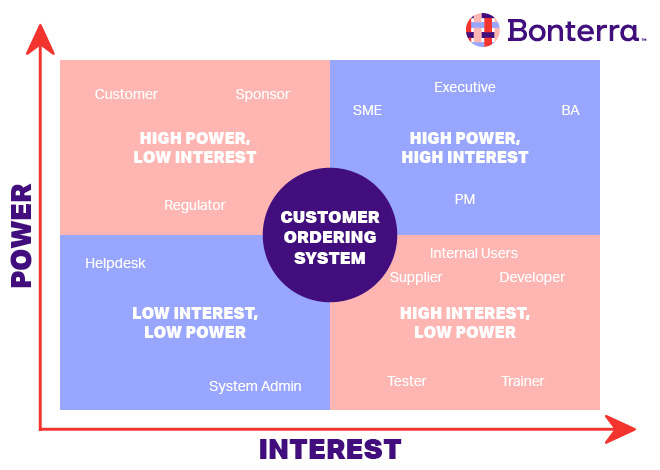By definition, nonprofit organizations aren’t trying to earn a profit, but they can still benefit from following certain standard business procedures. For example, before companies launch a new product, they perform a needs assessment to evaluate if there is a real demand for their product. Similarly, before launching a new nonprofit initiative or service, you should perform a needs assessment to determine if there is a need for it in your community.
A nonprofit needs assessment is a useful tool for determining if people will benefit from the services you want to provide and if those services will appropriately address their needs and yield favorable outcomes. It lays the foundation for planning and implementing new initiatives by synthesizing research materials, resources, and strategies while clarifying any potential opportunities or issues.
Follow along with these steps to begin your nonprofit needs assessment and start your initiatives off on the right foot.
 After creating your own power versus interest grid, you can identify high-priority stakeholders, such as those with high power and high interest, and develop strategies to effectively solicit their support.
After creating your own power versus interest grid, you can identify high-priority stakeholders, such as those with high power and high interest, and develop strategies to effectively solicit their support.
1. Ask the right questions
To ensure your nonprofit needs assessment is thorough and answers all necessary questions, cover at least these four foundational areas in your assessment:- Describe the need.
- Quantify the need.
- Identify who else addresses the need.
- Determine who you serve.
Describe the need.
- What’s the problem you’re trying to solve?
- How will you solve the problem?
- How do you know there’s a need?
- Why is this your goal?
- What’s the historical trend of this problem?
Quantify the need.
- How many people need your solution?
- Does your nonprofit organization have the bandwidth to administer your solution?
Identify who else addresses the need.
- Who is currently working on solving the same problem?
- How will your offerings bring something new to the table?
Determine who you serve.
- How do you define the populations your organization serves?
- Who is affected by the problem you want to solve?
- What’s the best way to serve these populations?
- How will you conduct outreach to the target audience?
2. Conduct a SWOT analysis
Next, perform a SWOT (strengths, weaknesses, opportunities, and threats) analysis on your nonprofit organization’s current initiatives. Determining these key insights will help you formulate your new implementation strategy.Strengths and weaknesses
Assess your current programs, resources, and general operational structure to determine what you are doing well and where there’s room for improvement. Your strengths may be what makes your initiative unique, such as your partnerships in the community, your experience and knowledge, or the quality and reputation of your organization. For the weaknesses section of your SWOT analysis, examine the areas that need the most improvement. This may include a gap in skills, lack of funding, or staffing concerns. By determining your weaknesses, you’ll be able to fix pressing issues within your nonprofit organization and ensure that your staff is motivated and involved in the long run.Opportunities and threats
Many organizations excel at introspection but find it more difficult to examine external factors. The opportunities and threats sections of your SWOT analysis help you focus on the conditions of the real world and how they affect your activities. Opportunities can include finding new external funding sources, such as grants, or increasing public awareness about issues relevant to your purpose. The threats section should include any possible changes in the community that could negatively impact your initiative, like strong competitors or a changing political climate, as well as factors such as seasonality.3. Collect data
Now that you’ve made a plan to address your organizational needs, it’s time to look at your data to determine your next steps. The good news is that you can conduct this research using the nonprofit software that your organization likely already has. Here are a few ways to gather and contextualize the required information for a nonprofit needs assessment.Stakeholder analysis
A stakeholder analysis is a report of all interested parties in your organization and how their interests relate to your activities. Often, this data is reported via a power versus interest grid. This way, you can visualize the influence and interest each party has in your nonprofit and adjust your outreach approach appropriately. Here’s an example of a power and interest grid for a customer ordering system: After creating your own power versus interest grid, you can identify high-priority stakeholders, such as those with high power and high interest, and develop strategies to effectively solicit their support.
After creating your own power versus interest grid, you can identify high-priority stakeholders, such as those with high power and high interest, and develop strategies to effectively solicit their support.
Surveys
This straightforward data collection technique is a tried and true way to get answers directly from your community. Consider sending out a survey to your loyal supporters inquiring about how you can improve your offerings. Or, reach out to your target beneficiaries to ask what services would be most helpful to them.Interviews
Get in-depth information from your target audience by conducting interviews. This hands-on technique is similar to surveying your participants but with added detail and personalization. Interviews are also a good external outreach tool. For example, a community partner or fellow nonprofit professional might give you more data in an interview than they would in a survey as you develop a rapport with them.Focus groups
If your nonprofit has the time and resources, you might consider putting together a focus group to represent the stakeholders in your organization’s sphere, such as target beneficiaries and community partners. You can gather these focus groups by deciding which stakeholders you want to learn about and choosing people who match that description. Then, devise questions and scenarios to see how they react. Identify trends in their responses, then incorporate this data into your final takeaways.Public records
Public records include items such as the census and laws pertaining to your nonprofit at the local, state, and federal levels. This information can prove useful in deciding parameters for your future endeavors.Academic studies
If you’re trying to find data about a certain social or legal issue affecting the community you serve, academic works such as essays and studies can provide helpful contextual information. Plus, if you’re trying to back your case for support, using analytics from a proven source is a great way to demonstrate the need. Whichever methods you choose, you should have concrete evidence to demonstrate that there’s a need for your nonprofit’s services and that your solution will address the issue.4. Aggregate your findings
Once you have narrowed your initiative’s focus, determined your target audience, and performed a SWOT analysis, you will be able to confidently determine if your initiative is of great need in the community. If there isn’t a need for your initiative, you can start planning a more necessary project that deserves your time, work, and money before diving in. On the other hand, if there is a need for your nonprofit’s program, you’ll be able to get right to work. To present your findings to your audience, whether they’re your board, city officials, or community partners, you might choose to write a formal report, make an interactive presentation, or create a downloadable resource similar to an annual report. Whatever the format, highlight your findings and actionable steps to address your nonprofit’s needs. Like any successful business, a nonprofit should only roll out a new service after determining that there’s a need for it. A thorough nonprofit needs assessment will help ensure your initiative’s eventual success and support your organization on its way to achieving its goals and optimizing its outcomes.
Ready to Get Started?




